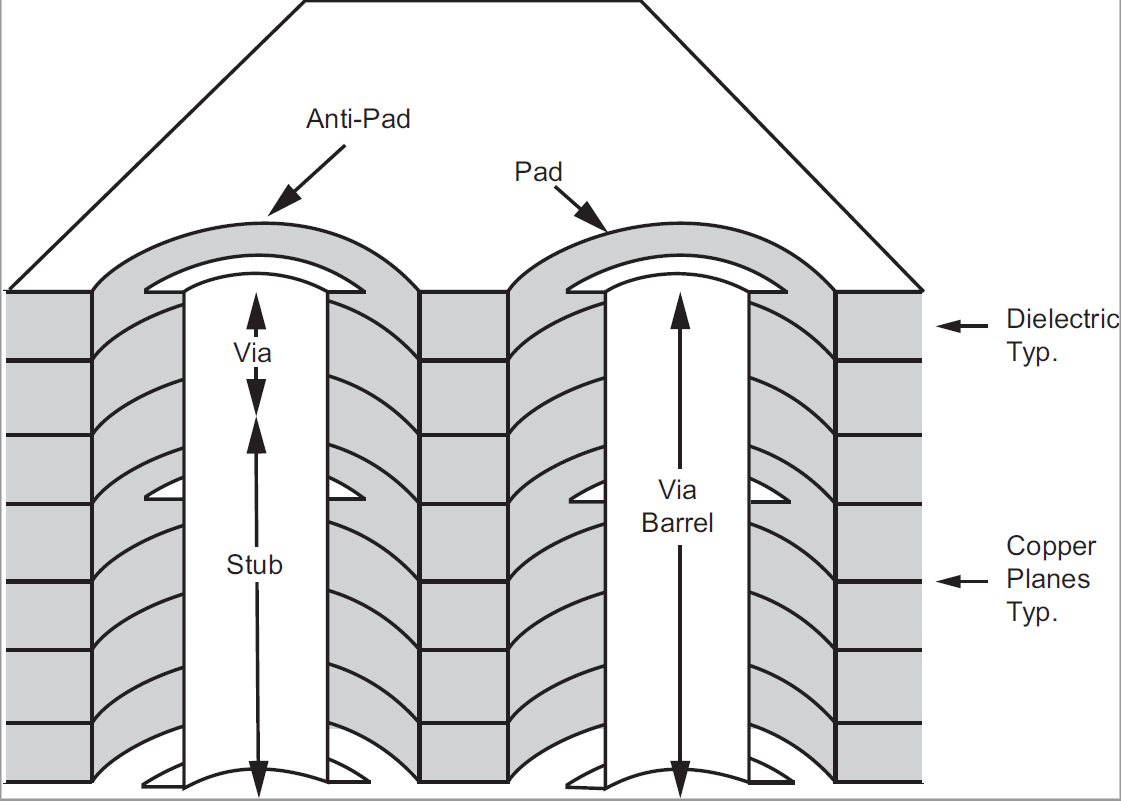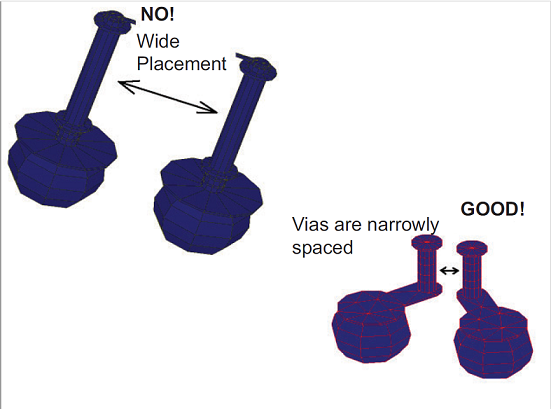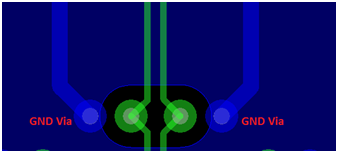3.2.1.3 Via
(Ask a Question)The target impedance of vias is designed by adjusting the pad clearance (anti-pad size). Field solver should be used to optimize the via according to the stack-up.

- Many vias on different traces should be avoided or minimized as much as possible.
- The length of via stubs should be minimized by back-drilling the vias, routing signals from the near-top to the near-bottom layer, or using blind or buried vias. Using blind-vias and back drilling are good methods to eliminate via stubs and reduce reflections.
- If feasible, non-functional pads should be removed. Non-functional
pads on-via are the pads where no trace is connected. This reduces the via capacitance
and stub effect of pads.
Figure 3-6. Non-Functional Pads of Via 
Using tight via-to-via pitches helps reducing the effect of crosstalk, as shown in the following figure.
Figure 3-7. Via-to-Via Pitch 
Symmetrical ground vias (return vias) should be used to reduce discontinuity for Common mode signal components, as shown in the following figure. Common mode of part of the signal requires continuous return path for TX and RX to GND. Return vias help maintain the continuity.
Figure 3-8. GND Via or Return Via 
